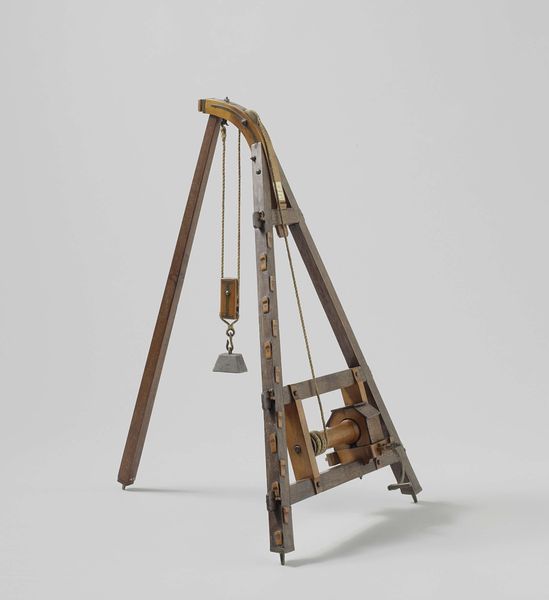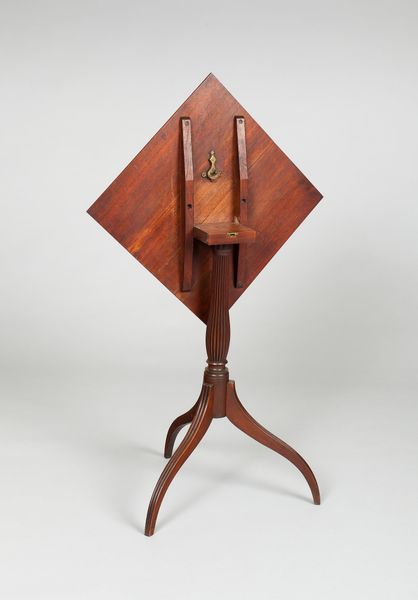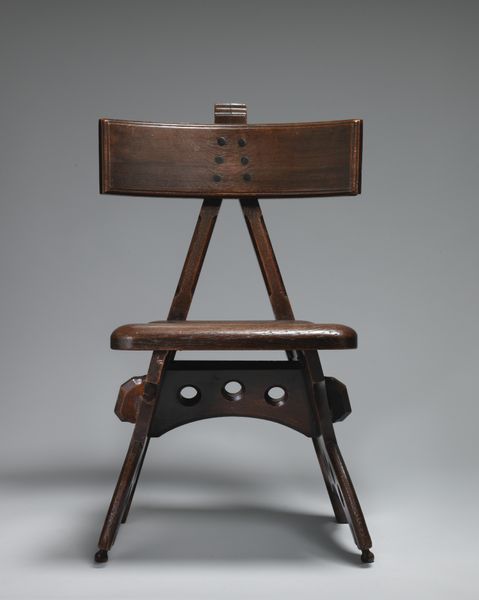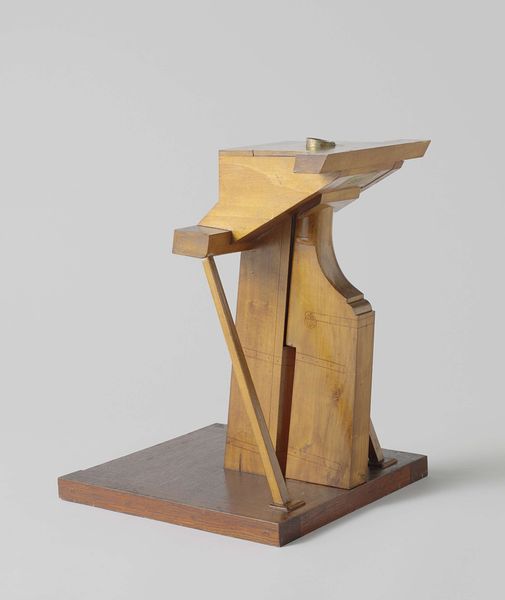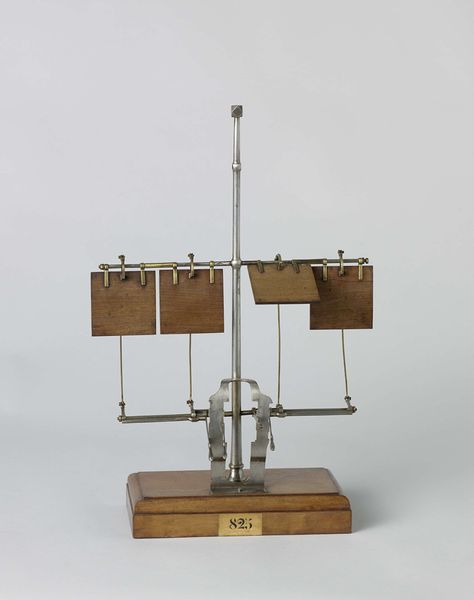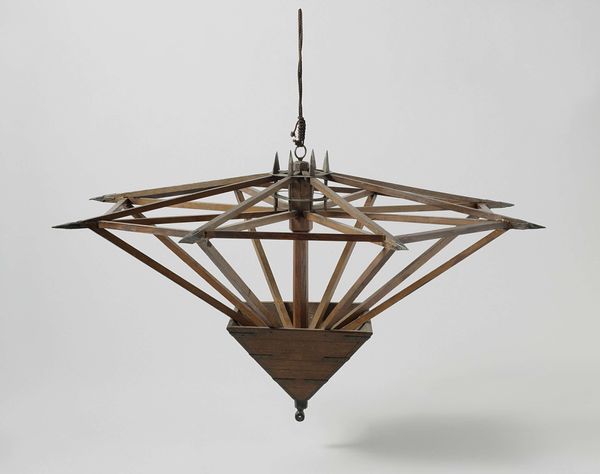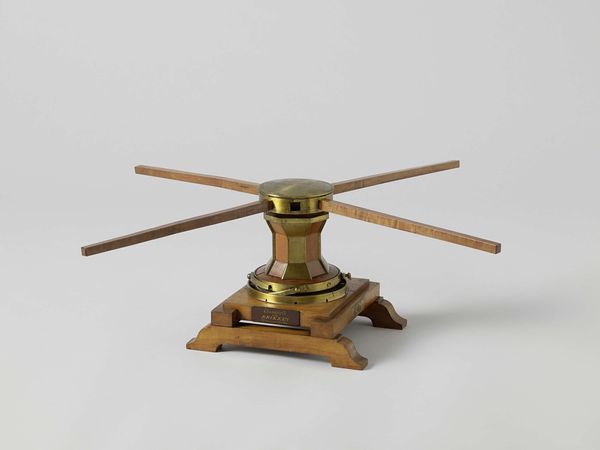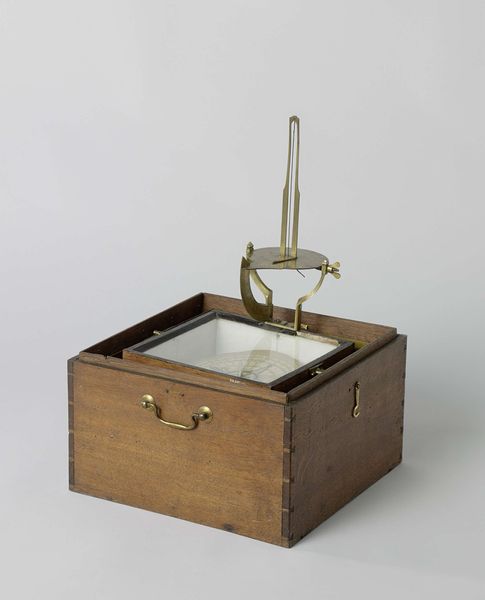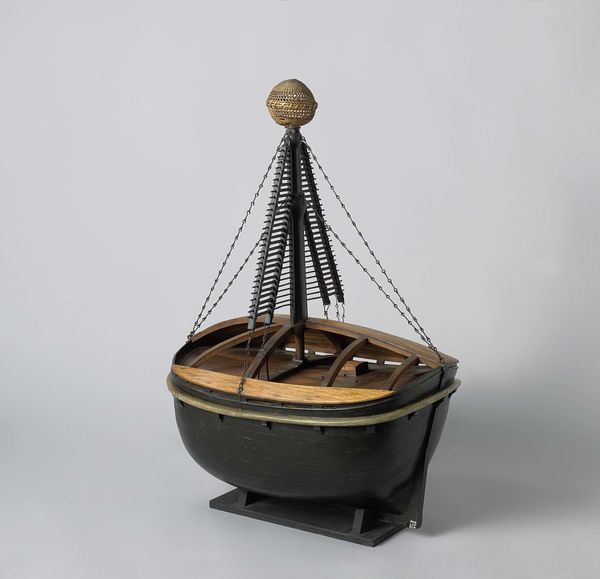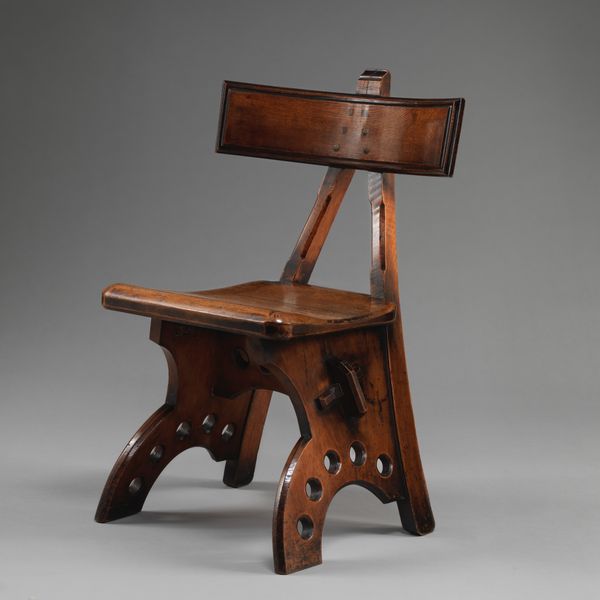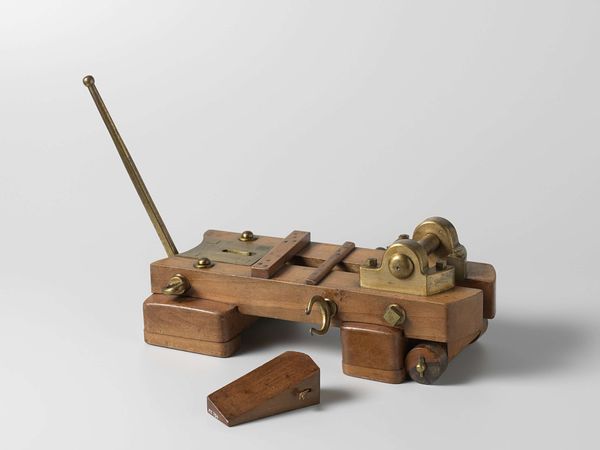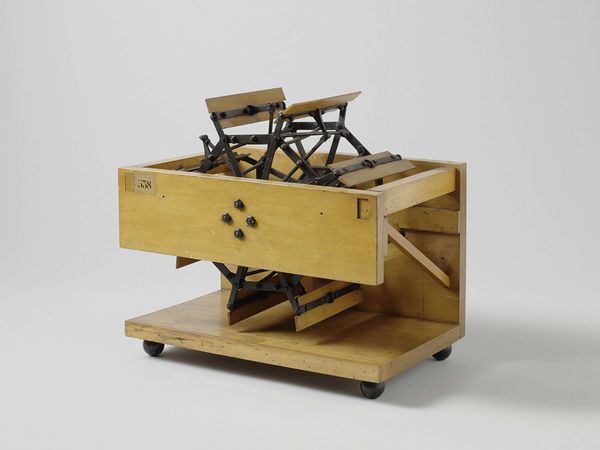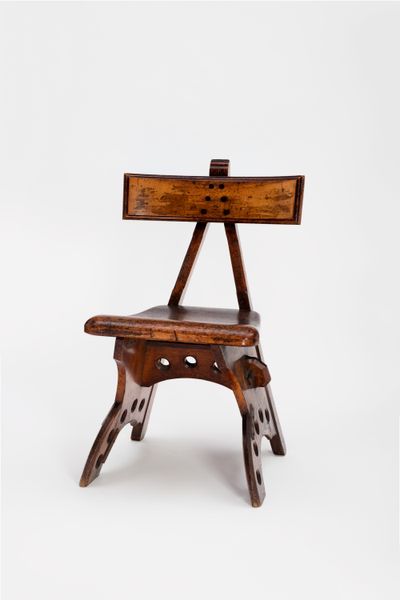
metal, photography, wood
#
metal
#
photography
#
geometric
#
ceramic
#
wood
Dimensions: height 5.5 cm, width 29.3 cm, depth 20 cm
Copyright: Rijks Museum: Open Domain
Curator: It is intriguing how this image, presenting an "Azimuth Compass with Tripod," crafted around 1810-1858 by W. & T. Gilbert, seems to freeze a moment of exploration and measurement in time. The meticulous arrangement suggests not only function but also precision in craftsmanship. What strikes you immediately? Editor: Well, right away, there is an air of restrained potential in the image. It is poised and ready. The composition feels balanced yet purposeful, hinting at the broader socio-political context. Did the production and use of instruments like this enable globalized exchange, and with what impacts? Curator: Absolutely. The tripod itself, constructed primarily of wood and brass, speaks to specific labor practices of the time. How were these materials sourced, crafted, and distributed? Understanding these factors provides insight into 19th-century manufacturing processes. Note also the fine joinery in the box designed for the compass – the maker obviously understood the craft tradition and material integrity, emphasizing both utility and aesthetic value. Editor: The object's materiality evokes questions of access and expertise, especially as regards navigation and trade in the British Empire. Whose labor produced it? How might that labor reflect the asymmetrical power structures of the time? And furthermore, who wielded it? Curator: Well, navigation equipment played a crucial role in expanding European trade routes, linking raw material sources to manufacturing centers. We need to examine the commodification of knowledge inherent in this object: from compass-making traditions to the cartographic skills they enabled, which influenced the course of globalization. It speaks to resource access. Editor: Precisely! These navigation tools and technologies facilitated not only trade but also colonial expansion and exploitation. Understanding the role of instruments like this is critical. Their existence enabled systemic extraction and violence, and how instruments served to solidify asymmetrical global power dynamics. What impact do you see as stemming from this instrument, or is there any impact to these means of travel and power that could have led to something less violent. Curator: It certainly poses critical questions. Through studying its materiality, its making and application, this instrument unveils a fascinating network connecting skilled craftsmen to global trade and expansion and serves to raise important issues about exploitation as a result. Editor: Indeed. Gazing at the tripod and compass compels us to reckon with not only what humans can achieve technologically, but to also take care to interrogate those achievements' long-term impacts. It has been valuable to address this object together.
Comments
No comments
Be the first to comment and join the conversation on the ultimate creative platform.
